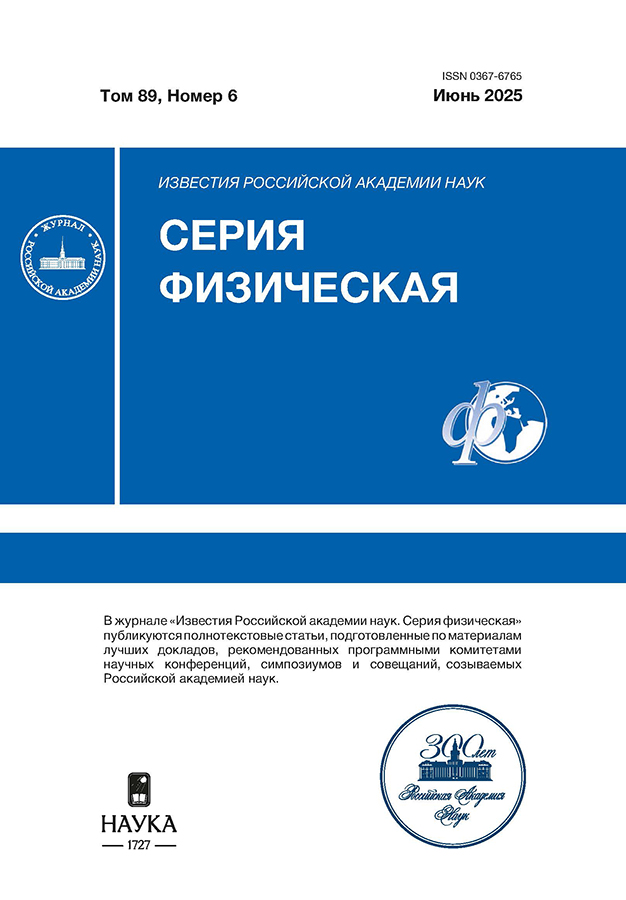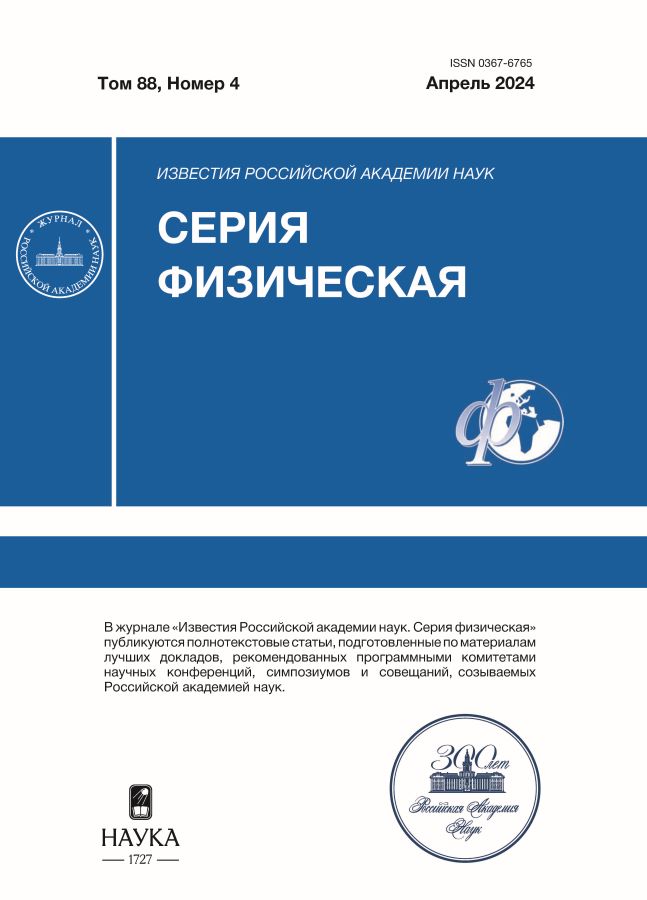Ferromagnetic resonance and magnetic anisotropy of 3-d metal wires with gradients of composition
- Authors: Denisova E.A.1,2, Chekanova L.A.1, Komogortsev S.V.1,3, Iskhakov R.S.1, Vazhenina I.G.1,2, Nemtsev I.V.1,2,4, Li О.A.2,4
-
Affiliations:
- Kirensky Institute of Physics, Federal Research Center Krasnoyarsk Scientific Centre of the Siberian Branch of the Russian Academy of Sciences
- Siberian Federal University
- Reshetnev Siberian State University of Science and Technology
- Federal Research Center Krasnoyarsk Scientific Centre of the Siberian Branch of the Russian Academy of Sciences
- Issue: Vol 88, No 4 (2024)
- Pages: 618-622
- Section: Magnetic Phenomena and Smart Composite Materials
- URL: https://rjonco.com/0367-6765/article/view/654708
- DOI: https://doi.org/10.31857/S0367676524040131
- EDN: https://elibrary.ru/QHMYLL
- ID: 654708
Cite item
Abstract
We discussed experimental results concerning the ferromagnetic resonance spectra characteristics of Co-Ni and Co-Fe-Ni wires arrays with different gradients of composition deposited into porous of track etched polycarbonate membranes. The influence of interfacial boundaries and concentration gradients on the effective field of the investigated wires has been studied. An anomalous angular dependence of the FMR resonance fields is observed for wires arrays with a membrane pore density of ~18%.
Full Text
About the authors
E. A. Denisova
Kirensky Institute of Physics, Federal Research Center Krasnoyarsk Scientific Centre of the Siberian Branch of the Russian Academy of Sciences; Siberian Federal University
Author for correspondence.
Email: len-den@iph.krasn.ru
Russian Federation, Krasnoyarsk, 660036; Krasnoyarsk, 660041
L. A. Chekanova
Kirensky Institute of Physics, Federal Research Center Krasnoyarsk Scientific Centre of the Siberian Branch of the Russian Academy of Sciences
Email: len-den@iph.krasn.ru
Russian Federation, Krasnoyarsk, 660036
S. V. Komogortsev
Kirensky Institute of Physics, Federal Research Center Krasnoyarsk Scientific Centre of the Siberian Branch of the Russian Academy of Sciences; Reshetnev Siberian State University of Science and Technology
Email: len-den@iph.krasn.ru
Russian Federation, Krasnoyarsk, 660036; Krasnoyarsk, 660049
R. S. Iskhakov
Kirensky Institute of Physics, Federal Research Center Krasnoyarsk Scientific Centre of the Siberian Branch of the Russian Academy of Sciences
Email: len-den@iph.krasn.ru
Russian Federation, Krasnoyarsk, 660036
I. G. Vazhenina
Kirensky Institute of Physics, Federal Research Center Krasnoyarsk Scientific Centre of the Siberian Branch of the Russian Academy of Sciences; Siberian Federal University
Email: len-den@iph.krasn.ru
Russian Federation, Krasnoyarsk, 660036; Krasnoyarsk, 660041
I. V. Nemtsev
Kirensky Institute of Physics, Federal Research Center Krasnoyarsk Scientific Centre of the Siberian Branch of the Russian Academy of Sciences; Siberian Federal University; Federal Research Center Krasnoyarsk Scientific Centre of the Siberian Branch of the Russian Academy of Sciences
Email: len-den@iph.krasn.ru
Russian Federation, Krasnoyarsk, 660036; Krasnoyarsk, 660041; Krasnoyarsk, 660036
О. A. Li
Siberian Federal University; Federal Research Center Krasnoyarsk Scientific Centre of the Siberian Branch of the Russian Academy of Sciences
Email: len-den@iph.krasn.ru
Russian Federation, Krasnoyarsk, 660041; Krasnoyarsk, 660036
References
- Pereira A., Palma J.L., Vázquez M. et al. // Phys. Chem. Chem. Phys. 2015. V. 17. P. 5033.
- Rial J., Proenca M.P. // Nanomaterials. 2020. V. 10. P. 2403.
- Darques M., Spiegel J., De la Torre Medina J. et al. // J. Magn. Magn. Mater. 2009. V. 321. P. 2055.
- Parkin S.S., Hayashi M., Thomasй L. et al. // Science. 2008. V. 320. No. 11. P. 190
- Wang D.-S., Mukhtar A., Wu K.-M., Gu L., Cao X. // Materials. 2019. V. 12. P. 3908.
- Zeng M., Yang H., Liu J., Yu R. // J. Appl. Phys. 2014. V. 115. Art. No. 17B514.
- Загорский Д.Л., Долуденко И.М., Каневский В.М. и др. // Изв. РАН. Сер. физ. 2021. Т. 85. № 8. С. 1090; Zagorskiy D.L., Doludenko I.M., Kanevsky V.M. et al. // Bull. Russ. Acad. Sci. Phys. 2021. V. 85. No. 8. Р. 848.
- Yang H., Li Y., Zeng M. et al. // Sci. Reports. 2016. V. 6. Art. No. 20427.
- Méndez M., Gonzalez S., Vega V. et al. // Crystals. 2017. V. 7. No. 3. P. 66.
- Bran C., Ivanov Y.P., Kosel J. et al. // Nanotechnology. 2017. V. 28. No. 9. Art. No. 095709.
- Denisova E.A., Chekanova L.A., Komogortsev S.V. et al. // IEEE Trans. Magn. 2022. V. 58. No. 2. Art. No. 2300805.
- Iskhakov R.S., Chekanova L.A., Denisova E.A. // IEEE Trans. Magn. 1997. v. 33. No. 5. P. 3730.
- Kittel C. // Phys. Rev. 1948. V. 73. No. 2. Р. 155.
Supplementary files














